Our Verdict
Lenovo's finest gaming laptop, with an inevitably high-end price tag to boot. But its build-quality is impeccable, and that mini-LED screen is a genuine thing of beauty. This is the notebook I would covet if I could spend whatever it cost to buy a modern gaming laptop.
For
- That display is stunning
- Superb build quality
- The fastest 16-inch laptop
- Lovely Lenovo keyboard
Against
- Liquid-cooling claims are questionable
- What battery life?
- Tiny trackpad
PC Gamer's got your back
Lenovo has almost made a hypocrite of me. Since this latest generation of gaming laptops rocking Nvidia RTX 40-series graphics chips first landed I've been saying only a fool would buy a notebook with an RTX 4090 in it. And yet, here I am, coveting the Lenovo Legion 9i with precisely that GPU inside it, wishing I had the sort of disposable income that would make a nigh-on four grand notebook attainable.
Thankfully you don't need the RTX 4090 version of this gorgeous machine to get the best bits of this Lenovo lappy; there's a moderately more affordable model with an RTX 4080 that will likely deliver practically the same level of gaming performance. And that's really what this poor nerd's heart is really aching for.
I've become a huge fan of Lenovo's gaming laptops since I first got my hands on the RTX 4080-toting Legion 7i Pro. That's a smart machine: well made, restrained, affordable, and delivers outstanding performance for the money, especially as it's been pretty heavily discounted for the past six months.
And it kinda came out of nowhere. Legion laptops have not really been on my radar until this generation, and they've fast become the machines I'm recommending to anyone willing to listen. But still, if it's a money-no-object question, I've always leaned towards the premium feel of the Razer Blade in either 14- or 16-inch trim.
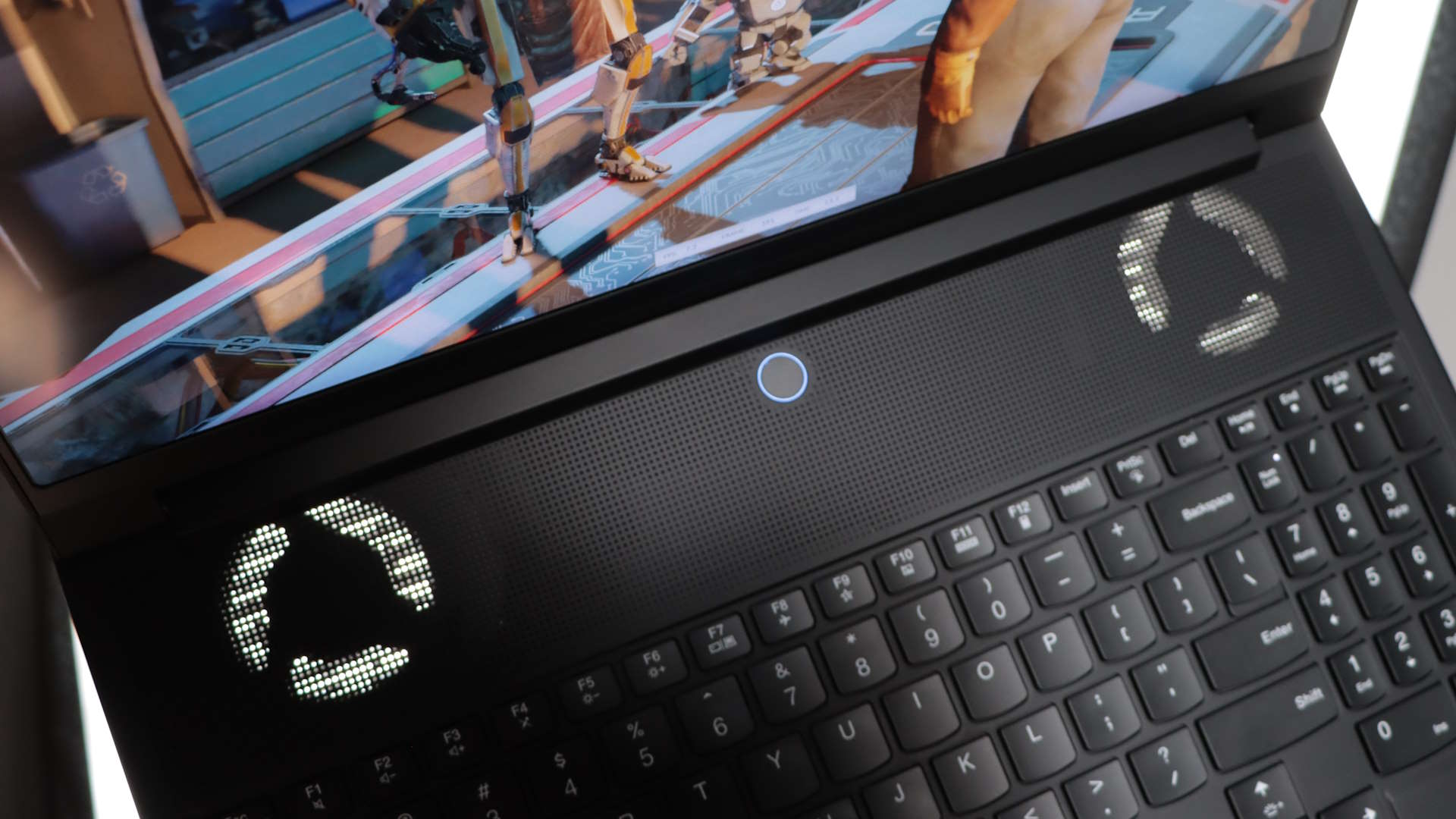
CPU: Intel Core i9 13980HX
GPU: Nvidia RTX 4090
Memory: 32GB DDR5-5600
Storage: 2TB NVMe SSD
Screen size: 16-inch Mini-LED
Resolution: 3200 x 2000
Refresh rate: 165Hz
Peak luminance: 1200 nits
Battery: 99.9Whr
Dimensions: 18.99 - 22.7 x 357.7 x 277.7mm
Weight: 2.5kg
Price: $3,693 | £3,950
But the Legion 9i might just have changed my mind on that. If I just want the best laptop I can theoretically buy, without the fiscal restraints of my own reality, then this is where my bank balance is being spent. Why? Well, it's almost the complete package, though in truth it's the screen and chassis design which swing it for me.
The build quality is actually the first thing that jumps out, even aside from the flashy carbon fibre composite on the lid this thing feels S O L I D. There is no noticeable give to the chassis, and it all feels superbly engineered and robust, and honestly a pleasure to use full-time. And that composite top layer is delightfully tactile, too, and as individual as your own fingerprints.
What's also rather tactile are the set of white ceramic key caps that come secreted in the box. They're maybe a little slippy, but they do look rather cool as your WSAD toppers. And the actual keyboard is classic Lenovo fare, in that it's the best around. The full size board is great to type on, from the ergonomic shape and size of the key caps to their depth of travel, and the full numpad is always going to appeal to a certain user.
You alt-code people know what I'm talking about.
It's also impressively slender for something that can house RTX 4090 laptop silicon. And that is largely thanks to its cooling design, though arguably less about what Lenovo is ambitiously calling "integrated liquid cooling." Let's be honest, it's a slightly larger vapour chamber—there's no radiator and almost no pump.
What Lenovo has done is create a little loop around the GPU in the laptop, with the heat pipe circulating liquid atop the VRAM via a tiny pump. It's little, quiet... and I don't really know what the point is if I'm honest. As I said, there's no radiator, so it's not actually cooling the liquid down much as it travels the short distance around the hot graphics memory chips and back.
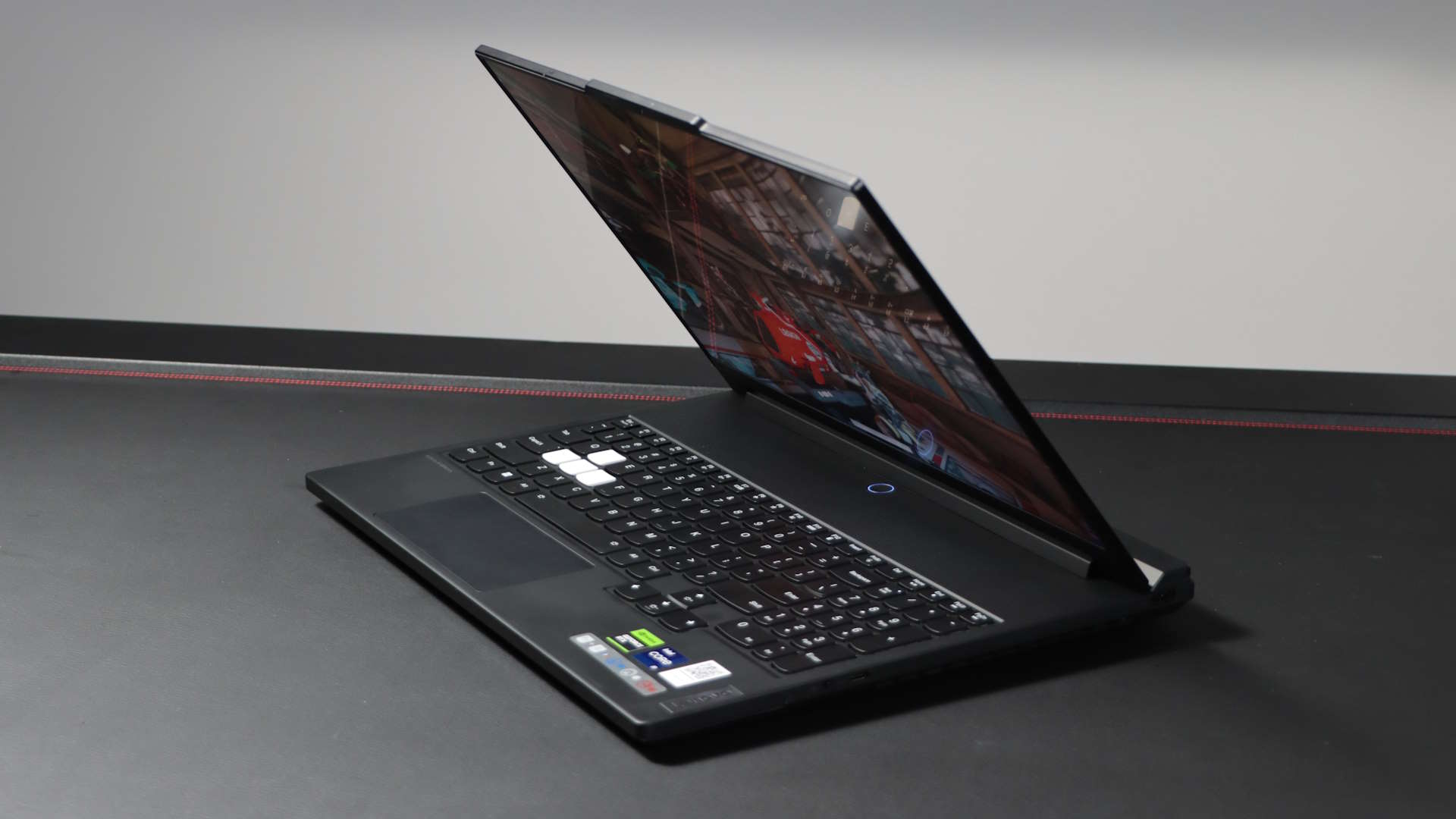
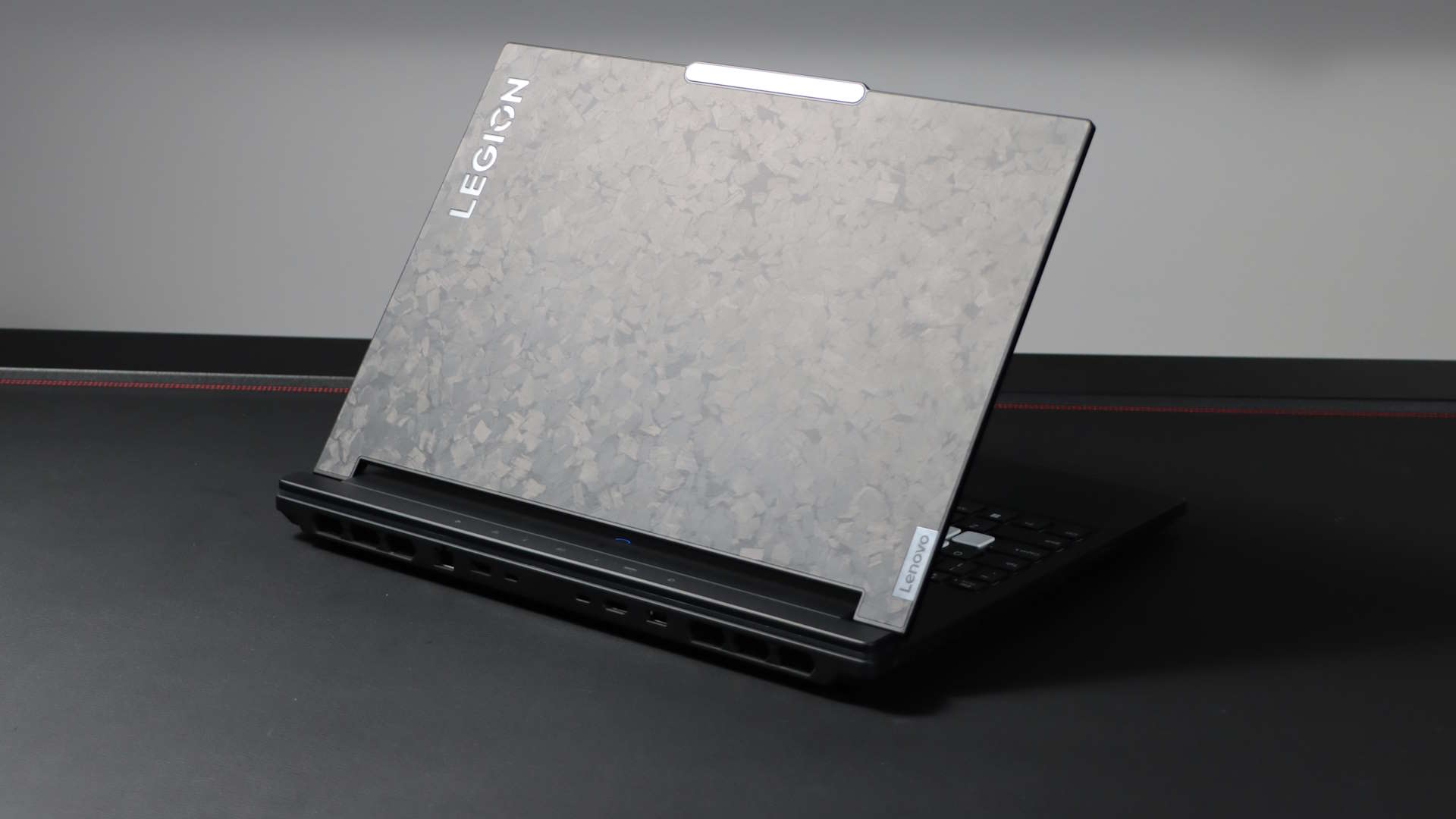

But it's the rest of the design which delivers the extra cooling needed to run this relatively slender high-end machine at its top speeds—this is the fastest I've seen any machine run its RTX 4090. Key to this is the pass through cooling the twin fans can engage in, pulling in air from the underside and expelling it directly out of the top and the sides of the chassis.
This is why the keyboard has been shifted down, so there's space for the vented area directly below the screen. This has significantly changed the standard ergonomics of typing on a laptop, but I've quickly gotten used to the altered layout and have been tapping away comfortably on the typically excellent Lenovo keyboard for all my recent in-office work. That shift has also had an impact on the trackpad, however, resulting in one that's a rather small affair. Which, when you're trying to work it on the 3200 x 2000 resolution screen, can be a bit of a pain. It's also not been the most responsive pad, either, and I've spent not a few frustrating moments scrabbling at the smooth surface wondering if it's just my callused fingers at fault.
But I'll forgive almost anything in terms of crimes against trackpads when the display panel is as good as this. The mini-LED screen is nothing short of stunning. It's super bright, and like the other top-end mini-LED laptop panels I've checked out, doesn't have any of the backlight issues I've regularly seen in full-size mini-LED gaming monitors.
Given its DisplayHDR 1000 rating, and the fact it can hit peak luminance levels of 1,200cd/m², this thing is gorgeous when it comes to HDR content. The colours seriously pop, and there's depth and contrast in darker scenes—it's punchy as all get out and I'm very much here for it.
I can also happily leave HDR enabled within Windows without feeling like I'm sacrificing the colour depth of standard SDR content. That's been a feature of modern laptop screens—such as the Nebula panels in the likes of the Asus ROG Zephyrus M16 and the Acer Predator Helios 16—but is taken to the extreme here.
That high resolution, however, is a bit of a double-edged sharp thing. A crisp 16:10 display is always welcome on the desktop, and I've been happily using it as my main work machine over the last few weeks (boiler issues at PCG Towers have resulted in hot-desking away from my desktop PC). But for gaming, even with the most powerful mobile GPU you can buy, those extra pixels absolutely do come at a processing cost.
You're looking at a drop of around a third in terms of average frame rate going from 1600p to the screen's native resolution, and when you're talking about a 16-inch panel, the actual difference in fidelity is incredibly hard to parse. All mini-LED things being equal, I'd have happily taken this exact same panel as a 2560 x 1600 display.
And that's really just me trying to pick faults, because again, at that 16-inch scale, you're not really losing a lot in terms of fidelity either packing in some upscaling to your game settings with either FSR or DLSS—so long as you're not going for the first-gen versions of either—or just simply running games at a lower resolution.
Though if there was one true fault that bears mentioning in earnest it's the battery life, or the conspicuous lack of. Now, I'm used to gaming battery life being all but worthless in modern high-end laptops, but this takes things to a ludicrous level. At just 40 minutes of gaming uptime it becomes an utter irrelevance away from a plug socket. More than any other modern laptop this is a gaming desktop replacement with naught but an uninterruptible power supply.
Which I guess is why you get supplied with two different chargers in the package: One 330W big boi, and another smaller 140W Type-C charger for when you want to take it out and about. That 140W mini-brick isn't going to deliver enough charge for you to game plugged in, however, so is more about keeping it topped up.
Battery annoyances aside, the only system which would give me pause in wholeheartedly recommending the Legion 9i is the excellent Asus ROG Strix Scar 17 X3D, and only because of that outstanding cache-rich Ryzen 9 mobile CPU at its heart. The equivalent RTX 4090 version is a little more expensive than the Lenovo here, but if you're after the best processing and well as the best outright gaming performance, then the Scar 17 X3D is the most powerful laptop around today.
It's just not as desirable.
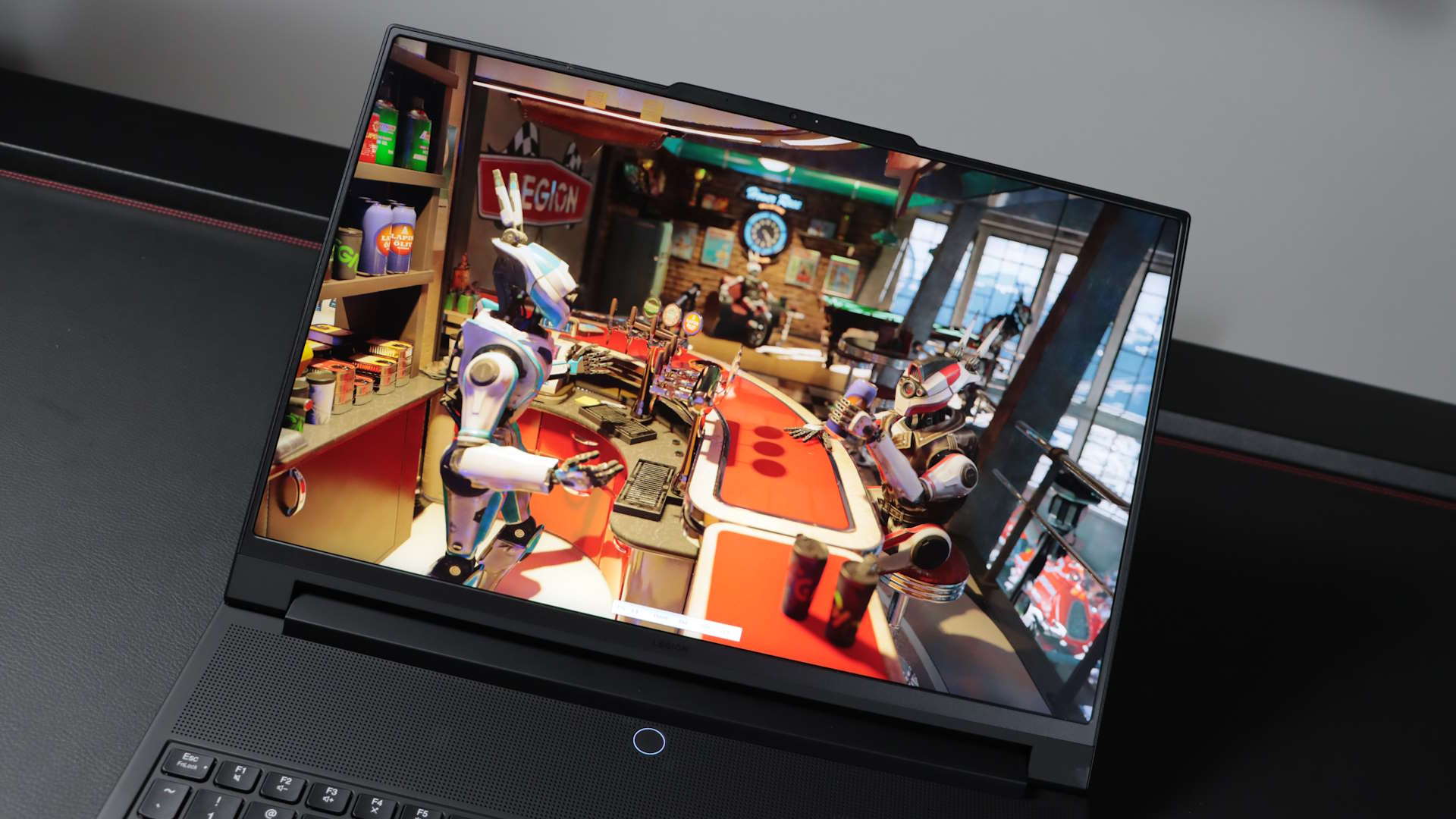
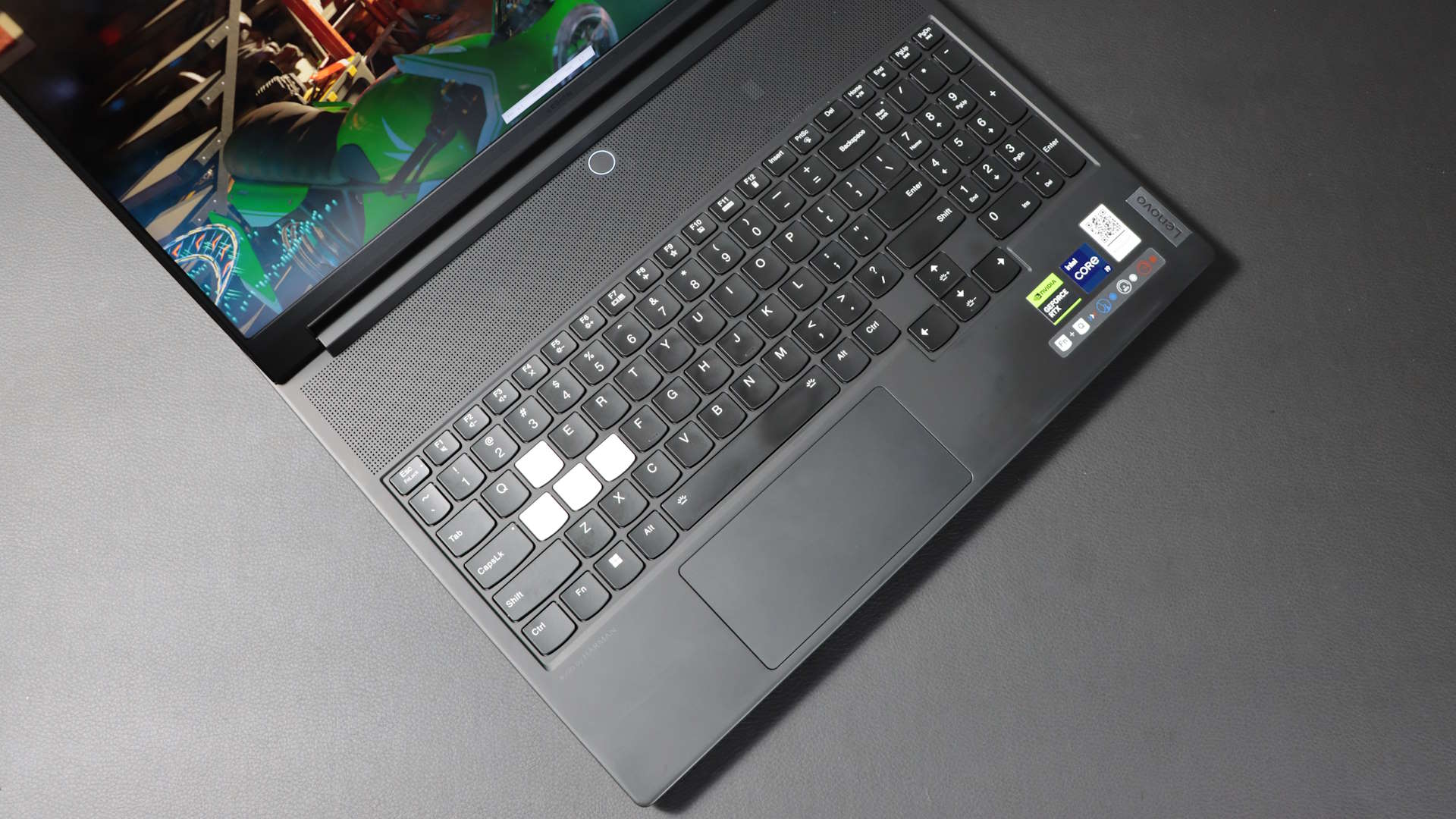
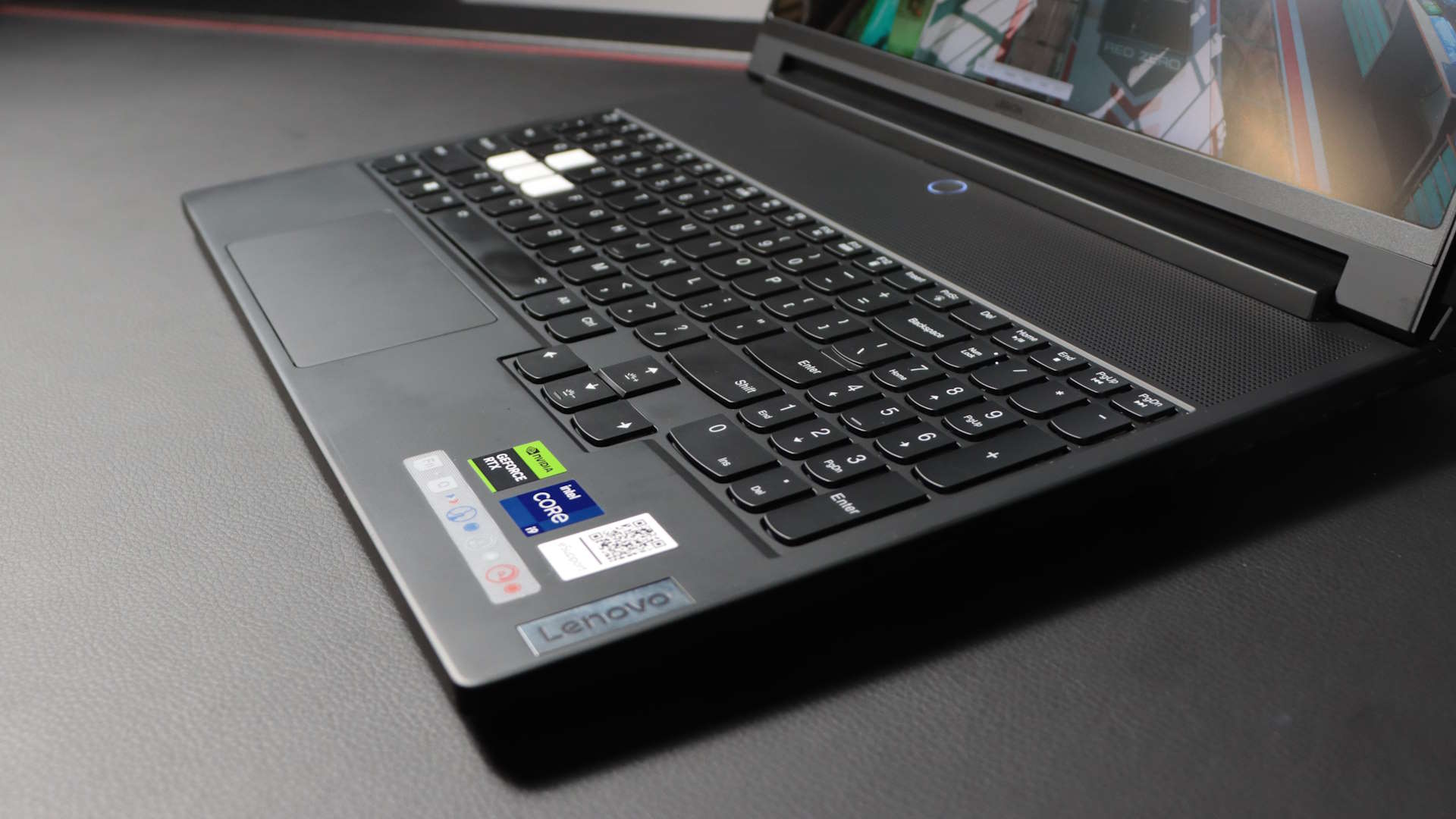
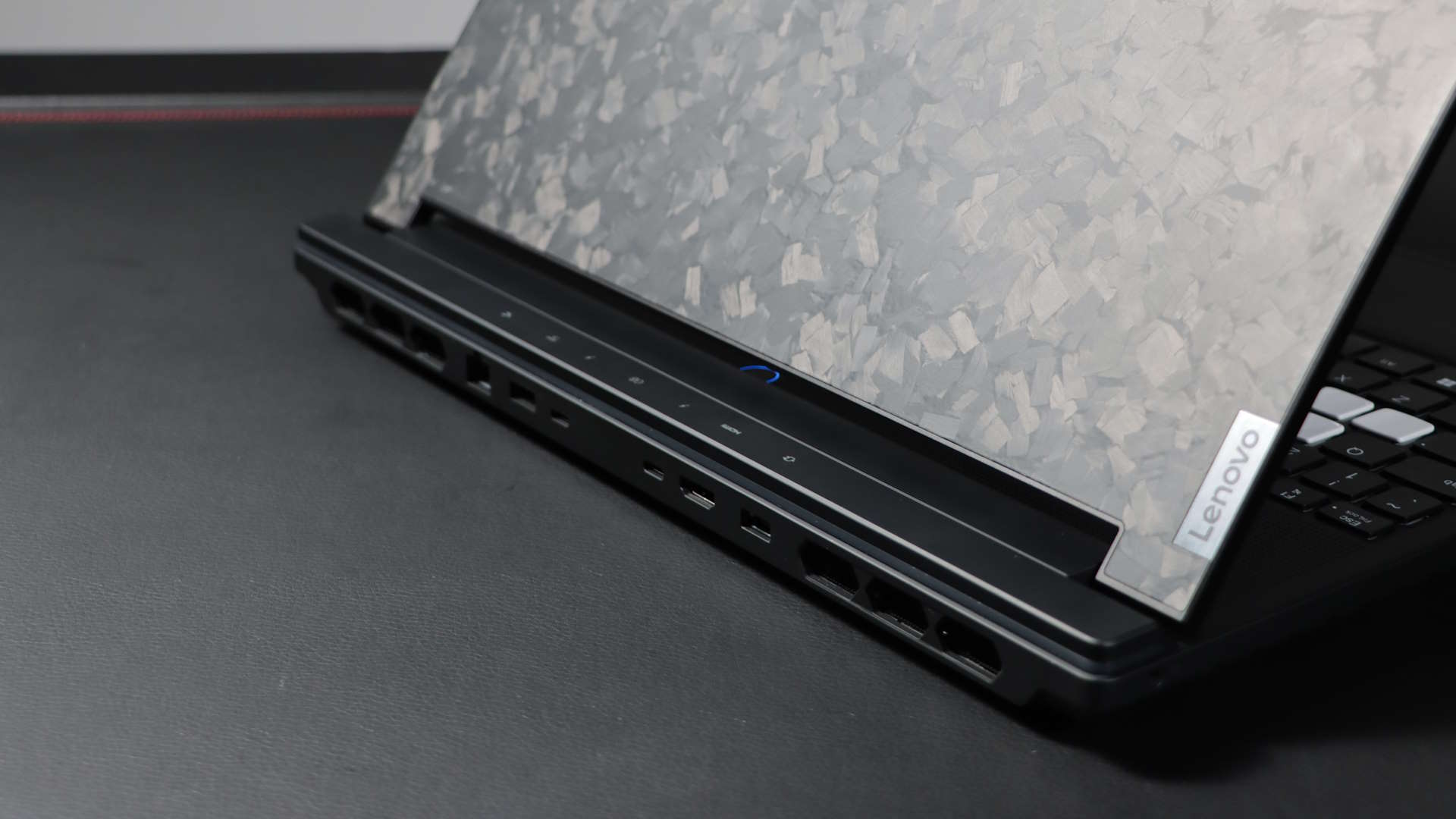
I know, that's a rather woolly, entirely subjective reduction, but as a complete package the Legion 9i has far more going for it. It's a smarter design where the Scar 17 is just a very classically aggressive Asus 'gamer' aesthetic, meaning the Legion is nowhere near as chunky a device. With the crushed carbon finish of the Lenovo laptop you're never going to be describing it as subtle, but I'd still be happier flipping that open in meetings than the ROG machine.
It's also got that screen. The 1440p display in the Asus laptop is fine, but one of my biggest issues with the Scar 17 is the fact that its 17-inch panel isn't one of the gorgeous Nebula designs Asus has in its smaller systems. The Legion 9i's glorious mini-LED screen is superior in every respect.
And while the Scar 17 does pack the highest overall gaming performance, when you're running at either 1440p or 1600p the performance difference is very slight indeed.
Which all brings me back around to this inescapable conclusion: the Legion 9i is the money-no-object-of-desire gaming laptop today. It looks good, it performs well, and that display is stunning. I'd want the RTX 4080 version myself—even if I had the cash to drop on the top-end option—but for me this well-designed and well-built machine is still Lenovo's finest hour.
Lenovo's finest gaming laptop, with an inevitably high-end price tag to boot. But its build-quality is impeccable, and that mini-LED screen is a genuine thing of beauty. This is the notebook I would covet if I could spend whatever it cost to buy a modern gaming laptop.

Dave has been gaming since the days of Zaxxon and Lady Bug on the Colecovision, and code books for the Commodore Vic 20 (Death Race 2000!). He built his first gaming PC at the tender age of 16, and finally finished bug-fixing the Cyrix-based system around a year later. When he dropped it out of the window. He first started writing for Official PlayStation Magazine and Xbox World many decades ago, then moved onto PC Format full-time, then PC Gamer, TechRadar, and T3 among others. Now he's back, writing about the nightmarish graphics card market, CPUs with more cores than sense, gaming laptops hotter than the sun, and SSDs more capacious than a Cybertruck.


